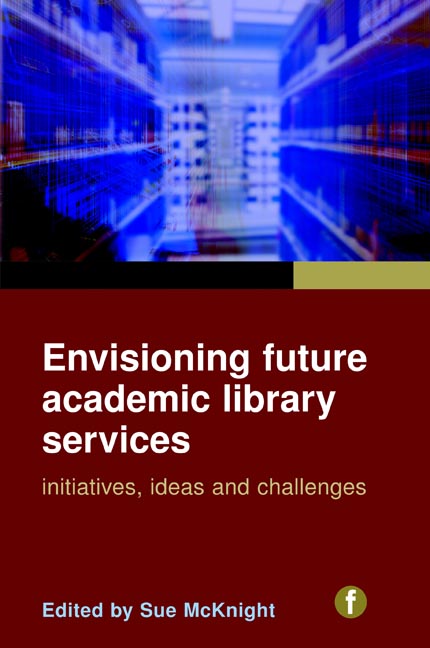Book contents
- Frontmatter
- Contents
- Foreword
- Contributors
- Introduction: We create the future!
- 1 Waiting for the barbarians: seeking solutions or awaiting answers?
- 2 The delete generation: how citizen-created content is transforming libraries
- 3 Libraries as places: challenges for the future
- 4 Web 2.0: redefining and extending the service commitment of the academic library
- 5 Second Life and libraries: boom or bust?
- 6 Some new business ideas in the HSS publishing space: what may librarians expect?
- 7 Loosely joined: the discovery and consumption of scholarly content in the digital era
- 8 Knowledge management, universities and libraries
- 9 Libraries and the management of research data
- 10 The leadership of the future
- 11 Adding value to learning and teaching
- 12 In search of the road ahead: the future of academic libraries in China
- Index
3 - Libraries as places: challenges for the future
Published online by Cambridge University Press: 08 June 2018
- Frontmatter
- Contents
- Foreword
- Contributors
- Introduction: We create the future!
- 1 Waiting for the barbarians: seeking solutions or awaiting answers?
- 2 The delete generation: how citizen-created content is transforming libraries
- 3 Libraries as places: challenges for the future
- 4 Web 2.0: redefining and extending the service commitment of the academic library
- 5 Second Life and libraries: boom or bust?
- 6 Some new business ideas in the HSS publishing space: what may librarians expect?
- 7 Loosely joined: the discovery and consumption of scholarly content in the digital era
- 8 Knowledge management, universities and libraries
- 9 Libraries and the management of research data
- 10 The leadership of the future
- 11 Adding value to learning and teaching
- 12 In search of the road ahead: the future of academic libraries in China
- Index
Summary
Introduction
Many universities and other institutions around the world continue to make considerable investments in imaginatively designed new and refurbished library buildings (Cannell, 2007; Designing Libraries, 2009; Drew, 2009; Edwards, 2009; McDonald, 2002a; Niegaard et al., 2008; Wu, 2003). This is despite some almost reckless predictions about the end of libraries as ‘places’ due to the rapid growth of networked electronic information and the use of the internet. We are seeing a huge resurgence of interest in creating these new ‘places’ designed to enhance learning, teaching and research and to ‘inspire’ succeeding generations of scholars (Watson, 2006, 2007, 2008; Hoare, 2008). Ironically, the welcome advances in information technology, together with significant changes in the way people use public spaces have only served to strengthen the role of libraries as important places in our universities.
A librarian who has been given the exciting responsibility of creating a new building has two significant managerial challenges: developing a compelling vision for the new space and leading the project to make sure the vision is realized. Place making is an enjoyable and creative art, and success requires a thorough understanding of the planning and design process (Khan, 2009; McDonald, 2007a) and an appreciation of the important qualities of creating good 21st-century space (McDonald, 2003, 2006, 2007b).
Although the emphasis in this chapter is primarily on university libraries, the principles discussed are sufficiently generic to relate to other sorts of libraries and, indeed, to learning spaces in general. They are equally relevant to all place-making activities: a major new building or an extension, a refurbishment or an adaptation, smaller projects concerned with making better use of existing space, or a mixture of these.
Let us first explore the nature of the managerial challenge.
The managerial challenge
Shaping new library spaces remains a substantial and complex managerial challenge, arguably the biggest and most important professional challenge the library manager will face. It involves vision and strategy, leadership and management, communication and creativity, and project management with all its associated risks. Many library managers may only have one opportunity to plan a new building in their career, and even though very large capital sums are often involved, they will almost certainly have had little experience or training for managing such a project.
- Type
- Chapter
- Information
- Envisioning Future Academic Library ServicesInitiatives, ideas and challenges, pp. 31 - 54Publisher: FacetPrint publication year: 2010
- 3
- Cited by

